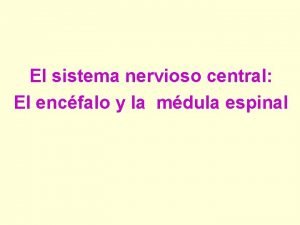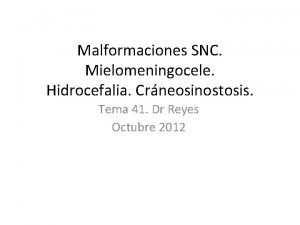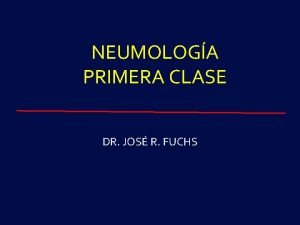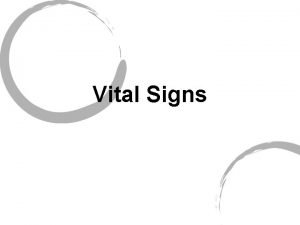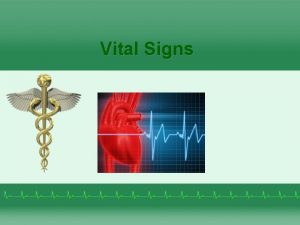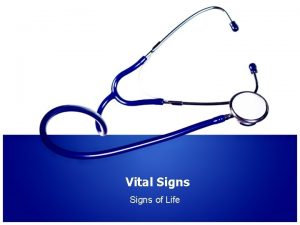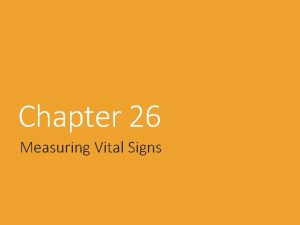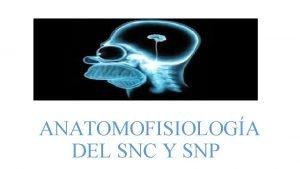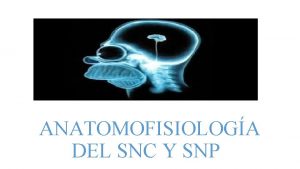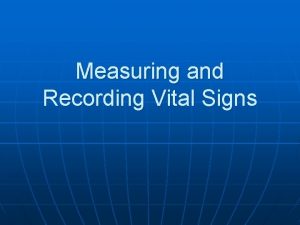SNC 4 M Medical Technology Human Vital Signs












- Slides: 12

+ SNC 4 M Medical Technology: Human Vital Signs

+ 2 Essential Questions: What are the four primary vital signs in humans and how are they measured? n What are the normal ranges for various physiological and biochemical indicators of health? n

+ 3 Vital Signs n Vital signs (VS) are measures of various physiological statistics, often taken by health professionals, in order to assess the most basic body functions. n VS are the most important measurements healthcare professionals will obtain when they evaluate or assess a patient’s condition.

+ 4 Four Primary Vital Signs n Heart Rate (Pulse) n Blood Pressure n Body Temperature n Respiration Rate

+ 5 Major Associated Internal Systems or Organs Lungs Brain Liver Muscular System Heart/Circulatory System

+ 6 Heart Rate (Pulse) What exactly is the heart rate or pulse? n

+ 7 Heart Rate (Pulse) n A wave of blood flow that expands an artery created by a contraction of the heart.

+ 8 Heart Rate (Pulse) (cont. ) n. Heart rate can be measured by finding the pulse sites of the body n. Pulse used: sites most commonly Radial pulse – located inside the wrist, near the thumb. n Brachial pulse – found in the antecubital space of the arm (the bend of the elbow) in adults. n

+ 9 Heart Rate (Pulse) (cont. ) n Pulse Sites (cont. ) n Apical pulse – auscultated with a stethoscope on the chest wall. The pulse is found at the apex of the heart.

+ 10 Heart Rate (Pulse) Sites (Answers) A. Temporal A. E. B. F. B. Femoral C. Popliteal D. Posterior tibial E. Carotid F. Brachial C. G. Radial H. Dorsalis pedis D. H.

+ 11 Electrocardiograph (ECG or EKG)

+ 12 Heart Rate (Pulse) (cont. ) Characteristics of the Heart Rate Assessed as beats per minute, or BPM. n Counted for 15, 20, 30, or 60 seconds. n Adults: healthy resting HR = 60– 80 bpm n (taken while lying down) n Tachycardia – a pulse rate faster than normal (above 100 bpm). n Bradycardia – a pulse rate slower than normal (below 60 bpm). n


